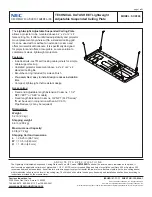
___________________________________________________________________
Alpha ESS Co., Ltd.
Page 38 of 75
Your Smart Energy
7.4
AC Connection
7.4.1
Conditions for the AC Connection
AC breakers must be installed on the AC side of the inverter to ensure that the
inverters can be safely disconnected from the power grid and the load.
DANGER
Danger to life due to fire!
You must protect each inverter with an individual AC circuit breaker in order to
ensure that the inverter can be disconnected safely.
Do not connect loads between the inverter and the grid breaker.
No consumer load should be applied between the AC circuit breaker and the inverter.
Use dedicated circuit breakers with load switch functionality for load switching. The
selection of the AC circuit breaker rating depends on the wiring design (wire cross
section area), cable type, wiring method, ambient temperature, inverter current rating,
etc. Derating of the AC circuit breaker rating may be necessary due to self-heating or
if exposed to heat.
The maximum AC current of the inverters can be found in the following table.
We recommend the following AC circuit breaker for AC connection.
Description
Max Current
Recommend AC Circuit
Breaker Rating
Inverter (indoor) Inverter (outdoor)
Grid side
40A
52.2A
63A
Backup side
21.7A
26.1A
32A
7.4.2
Grid and Backup Connection
There are two AC terminal blocks for grid and backup connection which have the
same installation steps.
We recommend the following cable requirements for AC connection.
Description
Value
Cable diameter range for grid cable gland
9~21 mm
Cable diameter range for backup cable gland
9~16 mm
Copper conductor cross section area range
4~6 mm
2
Stripping length of the insulated conductors
10~12 mm
1.
Take out the cord end terminals and AC connection cover provided by the inverter.
2.
Lead the AC cable through the cable gland of the AC connection cover, don’t tighten
the pressure cap of the cable gland. Grid cable must pass through magnetic ring
which is provided as inverter accessory.















































